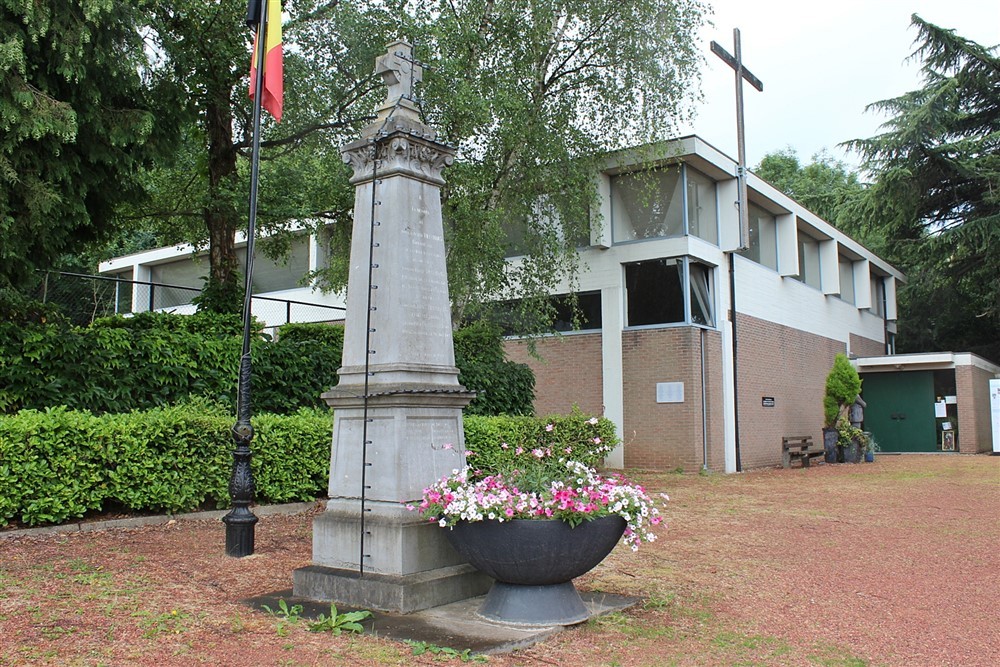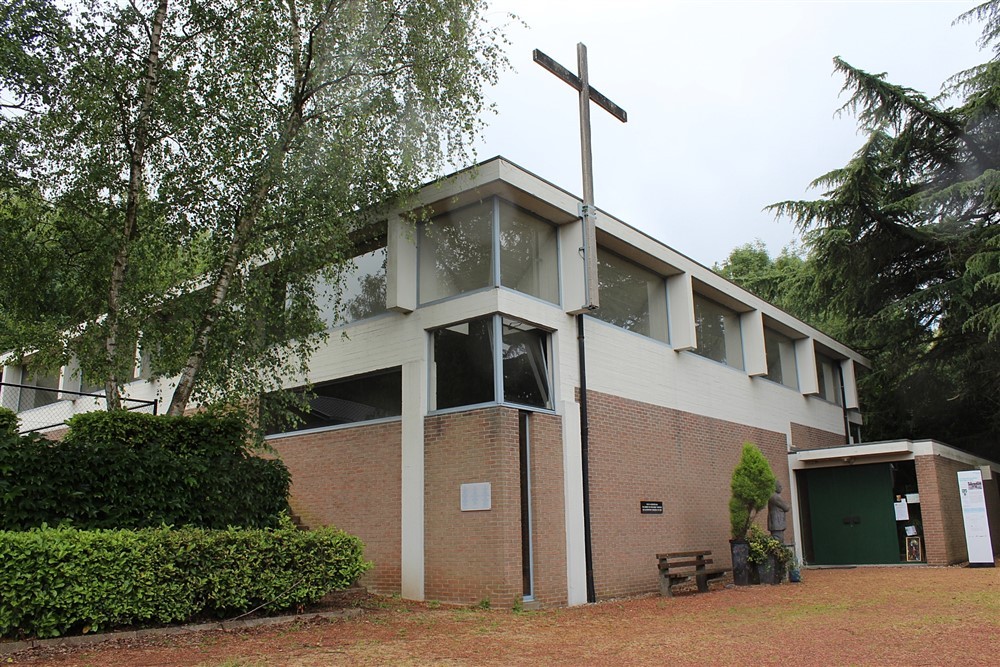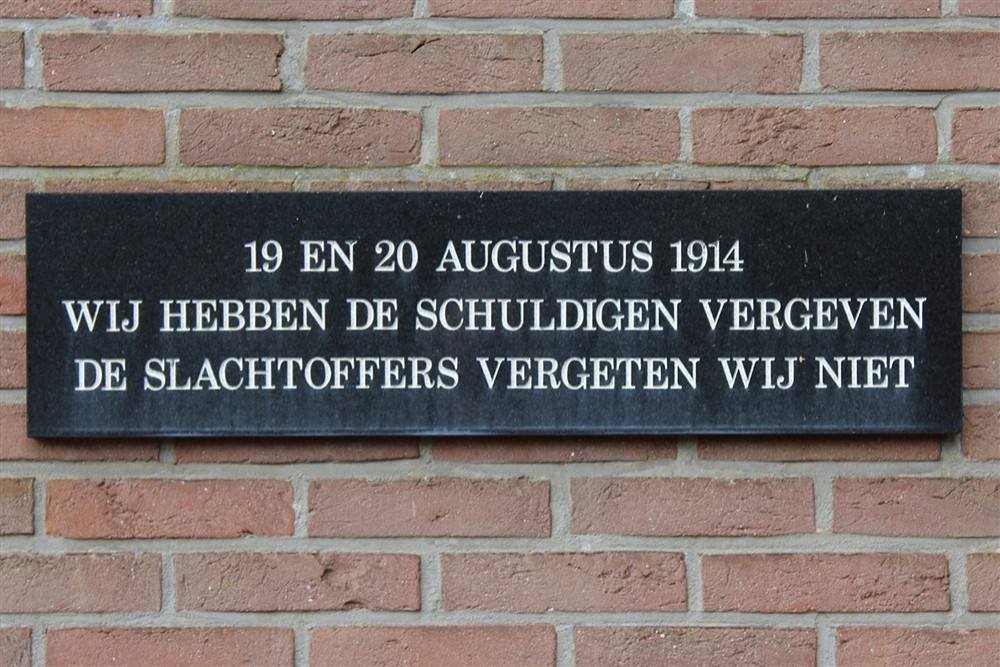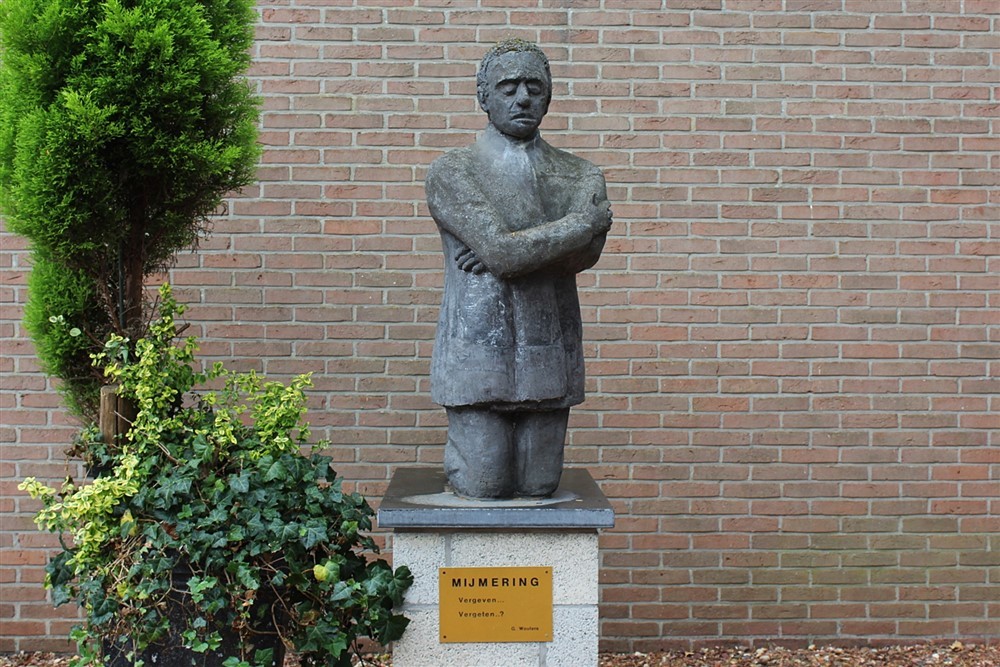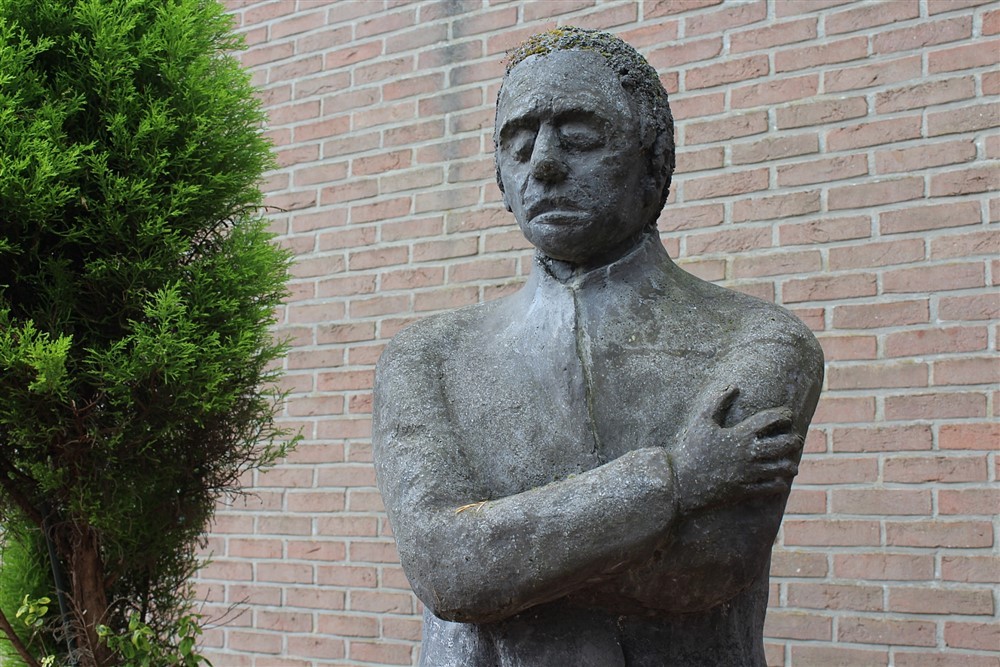Memorial Sint-Rochus Aarschot
The facts
On August 19, 1914, after strong resistance from the Belgian army, Aarschot was occupied by the German troops. The population was terrorized. Homes were destroyed and looted. In the morning, 39 civilians were murdered. The afternoon was quieter, but around 7 p.m. German soldiers panicked and fired everywhere in the city. Commander Stenger was killed. In the following hours, houses were set on fire and civilians, men, women and children were herded together on the Grote Markt. Around 7 p.m., a large group of men were led out of the city and shot.
At around 11 pm, a second group of hostages was taken away. The men were forced to lie face down in a potato field behind the then Stockmans farm. The next morning, at 5 am, a cart rattled by with the body of Major General Stenger on it. The body was buried in the railway embankment with military honor. After nearly two hours of deliberation, the staff officers decided on the fate of the hostages: every third man would be shot. Mayor Tielemans, his son and his brother were the first to act. The prisoners were arranged in rows of three. An officer identified an unfortunate person from each row: 29 men were executed.
In the morning of August 20, 1914, 29 Aryan hostages were murdered here by the German troops. They were part of the second group of hostages taken from the city by the German gendarmes the night before in retaliation for the death of the German commander Stenger who had been shot. Mayor Tielemans was one of them.
The memorial pillar
Because in 1921 the liberals and socialists in the city council refused to erect a memorial for the murdered mayor Tielemans, widow Tielemans bought the land near the now disappeared Stockmanshoeve where her husband, son and brother-in-law were shot. In 1923 she financed a memorial column: a hard stone obelisk crowned with a cross and surrounded by the greenery of weeping willows, palm trees and rose bushes.
Hunted by an order from the Germans to evacuate the city, widow Tielemans fled to the Netherlands with her daughter on August 20, 1914. She would never return to Aarschot. She paid for the maintenance of the monument and even after her death in 1936 her daughter Florence continued to do so. Because she did not want her children to pay any more for the costs, she donated land to the city in 1939.
The memorial
"A Christian, a priest, should be able to forgive and strive for reconciliation, but not forget."
The Saint Roch memorial cannot be discussed without mentioning priest Jozef De Vroey (1912-1999). Jozef De Vroey was two and a half years old when on August 19, 1914 his father would become one of more than 170 victims of the German terror in Aarschot. De Vroey would carry this trauma all his life. He made every effort to find out what happened that day. As an artist, his drawings and collages contain charges against senseless violence and the suffering of the innocent.
De Vroey was particularly indignant when he noticed that in the years after World War II, the memory of the massacre had faded and turned into indifference. In the early 1960s, he collected the testimonials of 34 Aarschot citizens who had lived through the terrible days and bundled them into the booklet "Aarschot Wednesday, August 19, 1914". During that time, he worked hard to build a memorial chapel where his father and the other martyrs were shot. The foundation stone was laid on May 24, 1964 in the presence of the German ambassador. The inauguration in 1965 was celebrated with a German priest. A gesture of reconciliation.
The building is a creation of the famous architect Marc Dessauvage (1931-1984), in a brutalist style of concrete, brick and glass, without a tower, without clocks. The only appearance of a prayer house, a sober cross was attached to the northeast corner of the memorial, raised above the roof.
The church is rarely accessible. Inside, numerous things remind us of the "martyrs". We see the wax image of the statue of Father Raskin at the Hoogbrug and drawings by De Vroey hang on the walls. When you peek through the windows of the portal, you see in the shadow the almost half-burnt image of Christ on the Cold Stone, saved from the fire of the Church of Our Lady in those August days of 1914.
At the entrance of the church is the statue Reverie by sculptor Gustave Wouters. It represents a kneeling father of a victim. On the copper plate we read the words: Forgive ... Forgotten ..? They are a paraphrasing of the motto that De Vroey has propagated throughout his life: "Forgive, yes. Never forget! "
Do you have more information about this location? Inform us!
Source
- Text: Jan Rymenams
- Photos: Jan Rymenams
Nearby
Museum
- Stedelijk Museum, Room "War and destruction" Aarschot - Aarschot
- Allied Forces Museum Herselt - Herselt
- House of the Franco-Belgian Resistance - Tielt-Winge
Point of interest
- Peace Carillon Aarschot - Aarschot
- Glass Window Church Of Our Lady Aarschot - Aarschot
- Grote Markt Aarschot - Aarschot
Monument
- Memorial Civilian Casualties WW1 Leenstraat Aarschot - Aarschot
- Monument Captain Gilson Aarschot - Aarschot
- Memorials Station Aarschot - Aarschot
